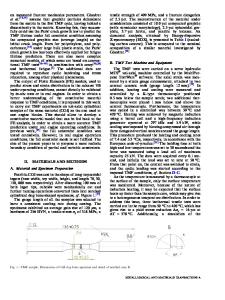Graphite Nucleation in Compacted Graphite Cast Iron
- PDF / 2,109,153 Bytes
- 10 Pages / 595.276 x 790.866 pts Page_size
- 8 Downloads / 456 Views
G. Alonso and P. Larran˜aga AZTERLAN, Basque Research and Technology Alliance (BRTA), Durango, Spain D. M. Stefanescu Ohio State University, Columbus, OH, USA University of Alabama, Tuscaloosa, AL, USA R. Suarez AZTERLAN, Basque Research and Technology Alliance (BRTA), Durango, Spain Veigalan Estudio 2010 S.L.U., Durango, Spain Copyright Ó 2020 American Foundry Society https://doi.org/10.1007/s40962-020-00441-2
Abstract During the last several decades, a multitude of theories have attempted to explain the process of graphite nucleation in lamellar (LG) and spheroidal (SG) graphite iron castings. Nevertheless, the complex 3D morphology of compacted graphite (CG) has hindered significant advances in similar theories for this type of graphite. To bring clarity to this issue, interrupted solidification experiments were conducted on compacted graphite irons at two different levels of titanium content in the melt (0.008% and 0.037%), with and without addition of commercial inoculants (Ce, MnZr). Nucleation sites were characterized through detectors, spectrums, mapping, and line scans utilizing FEG-SEM equipment. It was found that the nature of the inclusions acting as nucleation sites is directly
related to the titanium content in the base metal. Nucleation in samples with low level of Ti occurs on Mg–Ca sulfides or Mg–Si–Al nitrides, which usually appear alone and seem to affect the growth of graphite. In the case of high percentage of Ti, double inclusions formed by Ti carbonitrides growing on Mg–Ca sulfides and restricting their growth seem to be the best combination for the nucleation of graphite. This is in line with our earlier findings for spheroidal graphite.
Introduction
iron. These properties are defined by the chemical composition, shape of graphite, cooling rate and liquid treatment and normally are intermediate between those of flake and spheroidal graphite irons.9,10 The outstanding combination of mechanical and thermal properties of compacted graphite iron and the advances in its manufacture have made it a promising replacement for grey cast iron. CGI may be used for castings with good mechanical properties, especially good vibration damping capacity, good thermal conductivity,11 higher pressures, and relatively low production cost.12
Compacted graphite iron (CGI), also known as vermicular graphite cast iron, is an alloy with attractive features and is widely used in the automotive industry.1–3 Although CGI has been known for more than 40 years,4–8 the mechanical and physical properties of compacted graphite are not yet as well-known as those of nodular or lamellar graphite cast This paper is an invited submission to IJMC selected from presentations at the 6th Keith Millis on Ductile Iron held October 23–26, 2018 at the Sonesta Resort, Hilton Head Island, SC. It is published in the IJMC by permission of the DIS (Ductile Iron Society).
International Journal of Metalcasting
Keywords: nucleation, compacted graphite, interrupted solidification experiments, FEG-SEM equipment
While the manufacture of CG
Data Loading...










